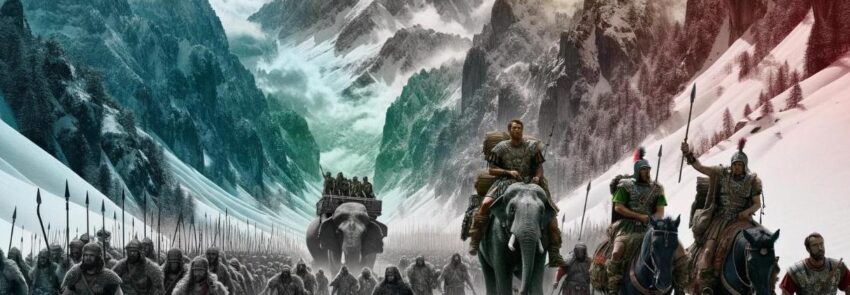The Second Punic War, fought between Rome and Carthage from 218 to 201 BCE, was one of the most significant conflicts of the ancient world. It is best known for the campaigns of the Carthaginian general Hannibal Barca, whose daring strategies and relentless determination posed a formidable challenge to Rome’s dominance. Hannibal’s legendary march across the Alps with a diverse army, including war elephants, stands as one of the greatest military feats in history. His victories at the battles of Trebia, Lake Trasimene, and Cannae showcased his tactical brilliance, leading to some of the most devastating defeats ever suffered by the Roman Republic. Despite these successes, Hannibal’s inability to secure decisive support within Italy and the logistical difficulties of sustaining a prolonged campaign in hostile territory ultimately undermined his efforts.
The tide of the war began to turn with the rise of the Roman general Scipio Africanus, who employed innovative strategies to reclaim Roman territories and weaken Carthaginian positions. Scipio’s decisive victory at the Battle of Ilipa in 206 BCE secured Spain for Rome and cut off critical Carthaginian supply lines. This was followed by a bold offensive into North Africa, culminating in the Battle of Zama in 202 BCE, where Scipio’s superior tactics and well-coordinated cavalry units decisively defeated Hannibal. The war ended with Carthage suing for peace, resulting in severe terms that stripped it of its military power and territorial holdings. The Second Punic War solidified Rome’s dominance in the Mediterranean, setting the stage for its transformation into a formidable empire and marking a turning point in the history of ancient warfare.
 |
 |

